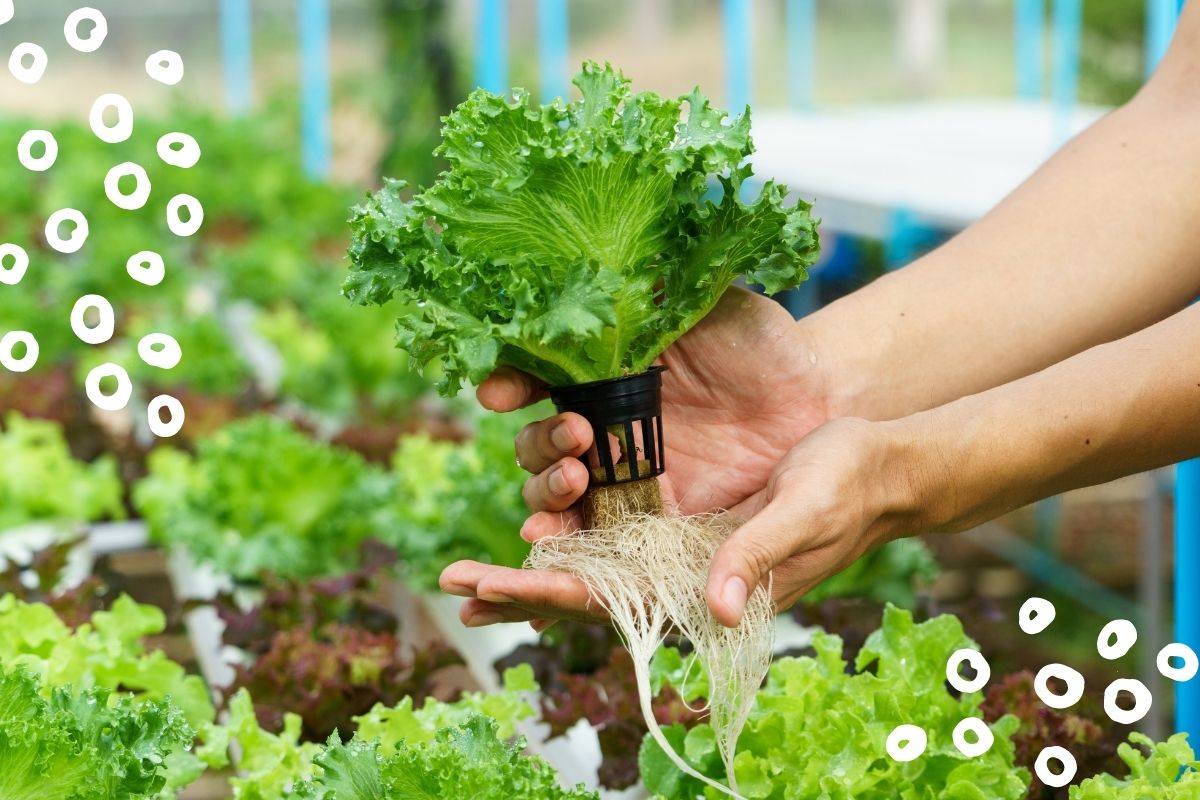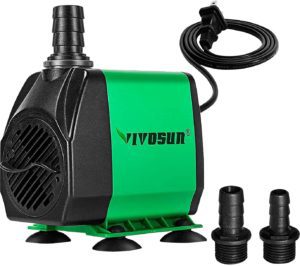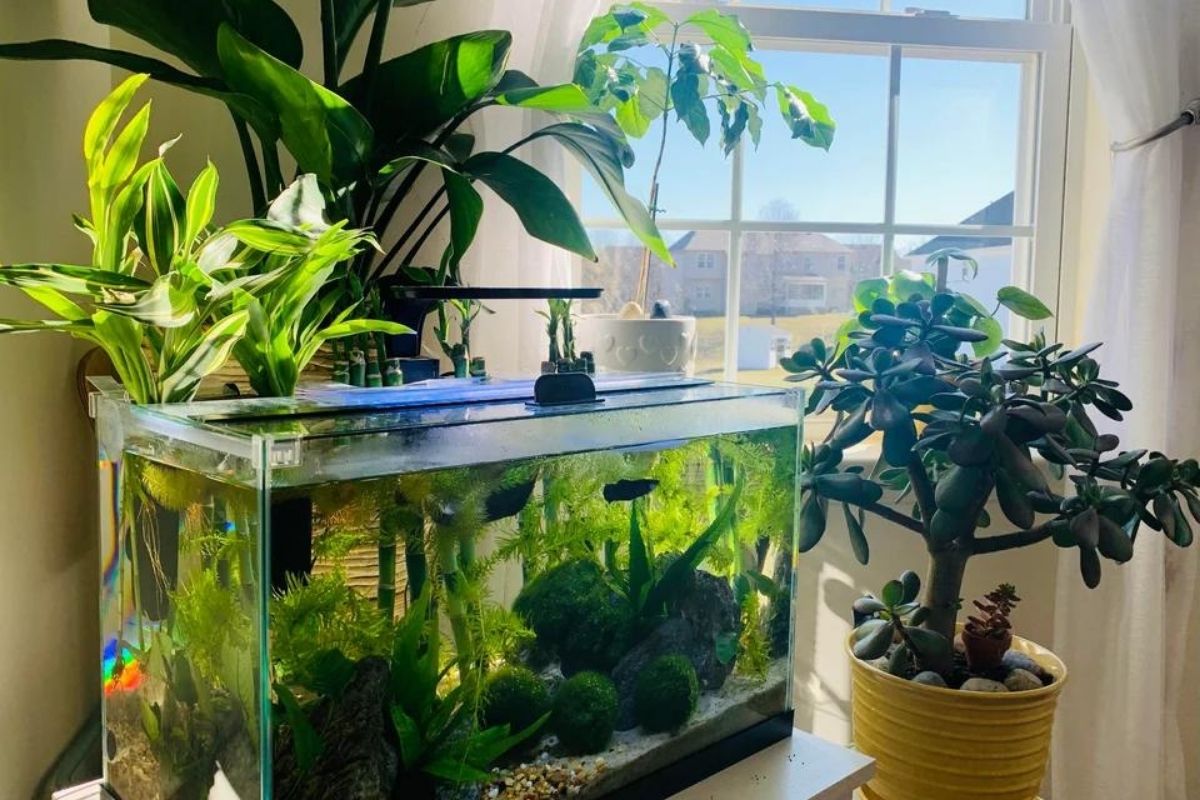If you’ve been thinking about setting up a hydroponics system in your indoor garden, deep water culture is one of the more simple systems that individuals can manage themselves to grow food or plants inside.
What is deep water culture?
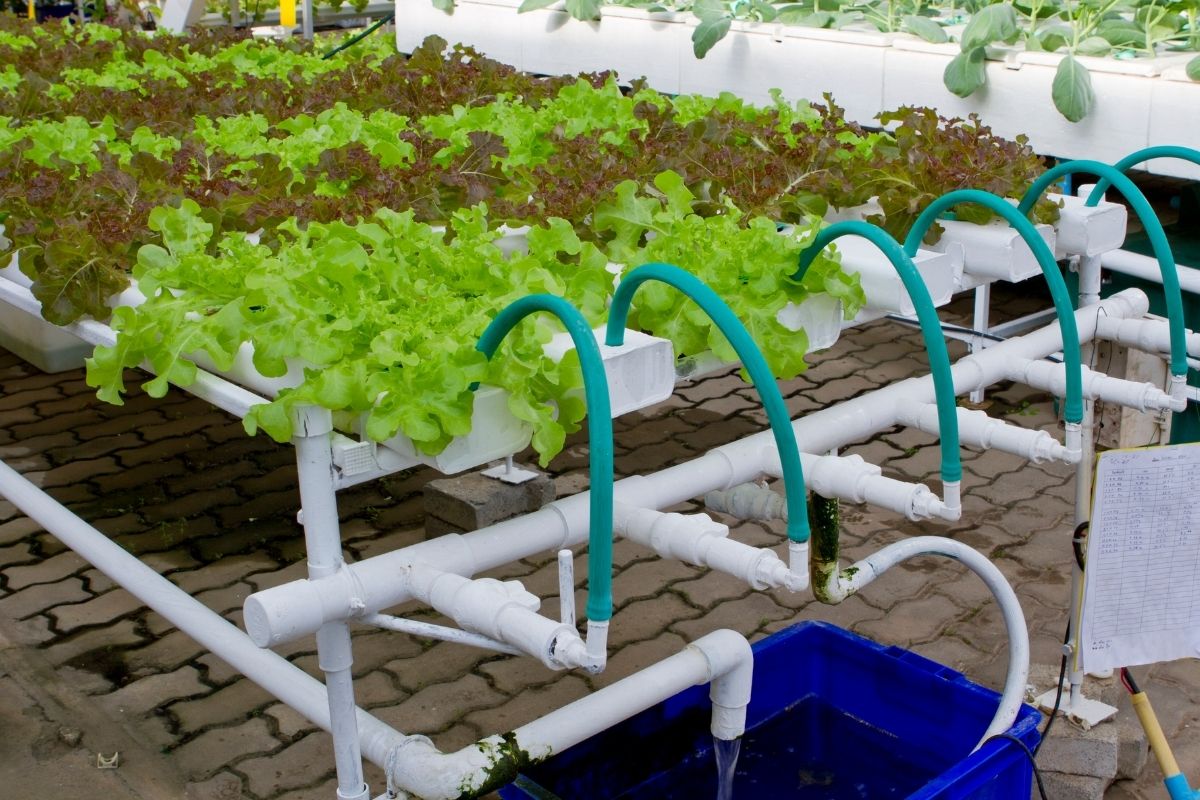
Deep water culture is when you grow your plants in a reservoir of water that has an air pump to oxygenate the growing environment. It’s different from growing plants in a vase or jar of still water: without the air flow, water must be changed regularly so it stays oxygenated. Plants will deplete oxygen from the water unless there is a regular supply of air running through it. Similar to too-compacted soil, if there’s no oxygen, the plant’s roots can’t breathe.
In addition to oxygen, water must have nutrients for the plants to absorb. When plants are grown in soil, the material provides nutrients as it is leached by water over time and absorbed by the plant’s roots. Water itself has no mineral or nutrient quality, so we need to provide those to the plants with liquid fertilizer. We have to do this more frequently than when fertilizing soil, so although hydroponics is less messy, it requires more attentive care. This care is worth it, though, because growing your plants in a deep water culture system is a really interesting and productive way to grow your plants! There are different setups you can choose from, with different uses for the system.
What deep water culture can be used for
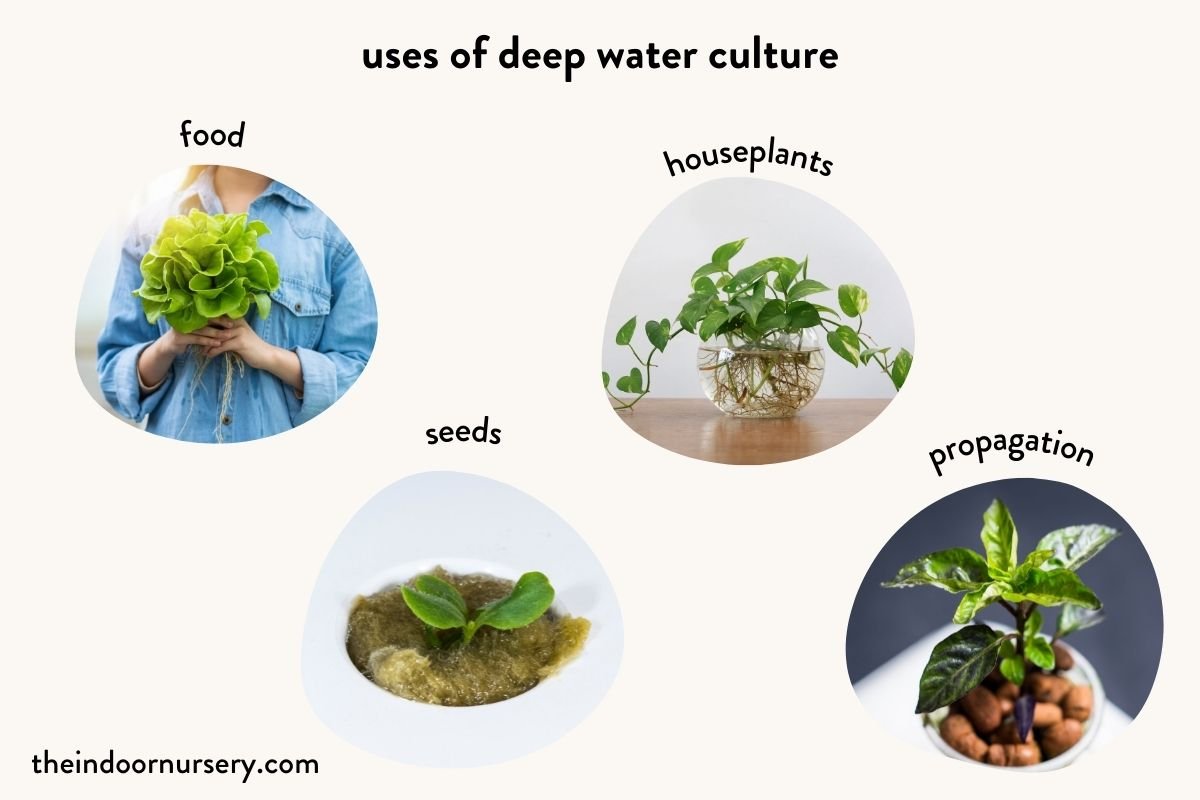
Deep water culture is a great option because it doesn’t use any soil, there is a lower chance of pests, and plants can grow more quickly in water-based systems. You can do everything in a deep water system that you can in soil:
- grow food
- grow houseplants
- propagate clippings
- start seeds
Food
One of the main uses of deep water culture hydroponics is for indoor food production. You can grow lettuce, herbs, tomatoes, root vegetables, and many other kinds of products on shelves, rows of beds, or single units.
Houseplants
There are many ways to grow houseplants with hydroponics, but deep water is an especially great choice for tropical plant species that love moisture. Certain kinds of plants like higher moisture levels than others, and these will do the best in a hydroponic system. Monsteras, peace lilies, pothos, and other water-loving species are good choices if you want to go soilless.
Propagation
Any plant that can be propagated in water from a clipping can be raised in a hydroponic system as well. Putting the propagation in a net pot with sphagnum peat moss, coco coir, or Leca will have your sample sprouting roots in no time.
Seeds
You can use rock wool cubes and coconut coir or Leca to set seeds in net pots to grow starter plants, then transfer them to a more permanent hydroponic setup or to a soil-filled pot!
The difference between water roots and soil roots
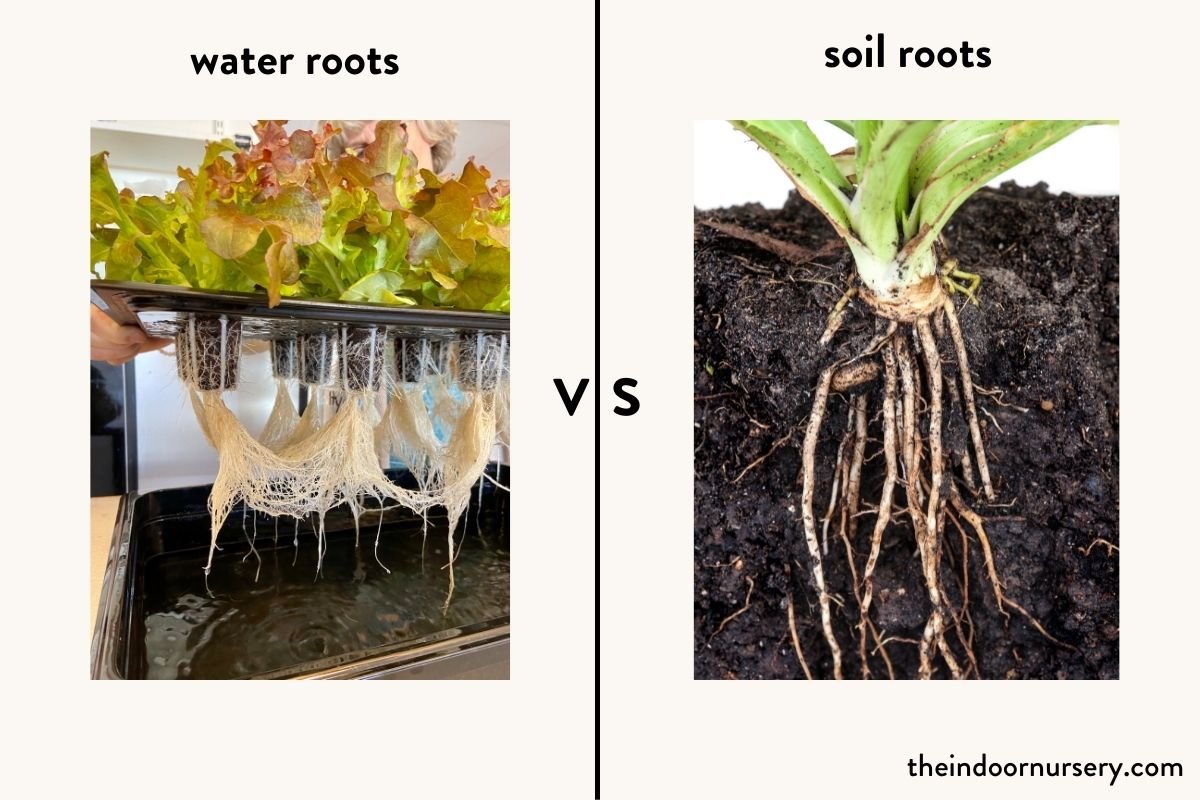
When roots grow in water, they have a different structure than those that grow in soil. Water roots are more numerous and thinner, since they aren’t supporting the weight of the plant and nutrients are available in abundance at all times. It takes time for soil materials and solid fertilizers to release their nutrients with successive waterings. Due to the lack of soil and carbon material in water, the roots are white, rather than a shade of brown.
In soil, roots are fully buried so they can reach around and absorb as much water as possible. When grown in water, however, roots shouldn’t be totally submerged. In both cases, the roots need some air. In soil, pockets of oxygen within the dirt deliver air to the roots, and in water systems, the upper roots and all of the stem should be kept dry.
To be sure the roots aren’t completely under water, and due to the lack of structure from the water, plants grown in tanks or containers need to be secured in one way or another. This is usually done either by the use of net cups in the lid of the reservoir, or by being tied to the edge of an open tank.
Maintaining your deep water culture system
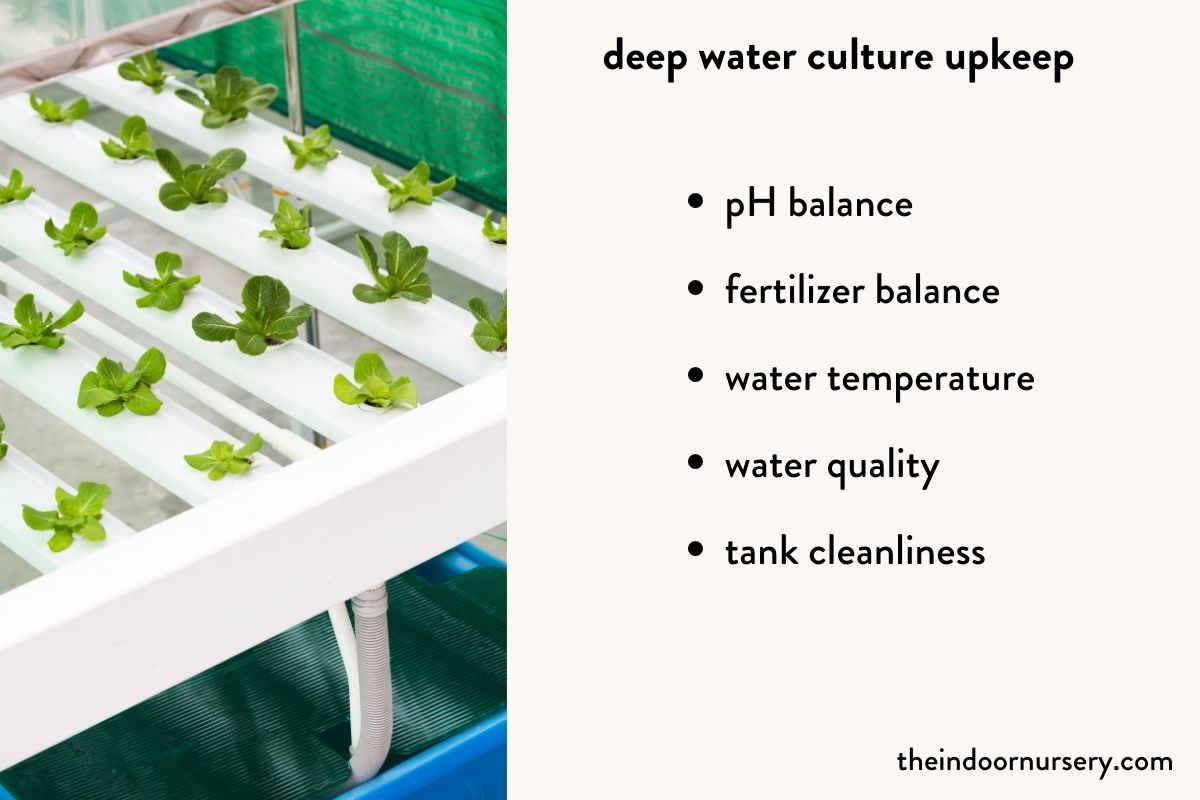
Keeping your growing environment clean is important for hydroponic systems. There are a few key maintenance steps to consider to keep your plants growing happily in their aquatic homes.
pH balance
Most houseplants like a soil acidity range of 5.5 to 6.5, and this remains true when water is the growing medium. You can test your water periodically with a meter, pH strip, or liquid samplers to be sure it isn’t getting too acidic or alkaline. Like in soil, too high or too low of acidity makes some nutrients unavailable and others toxic.
Fertilizer balance
Since water doesn’t contain nutrients on its own, all hydroponic systems need liquid nutrient solution to be added for the plants to get their essential nutrients. Like the oxygen in the water, nutrients will be depleted over time, and need to be supplied regularly based on the type of plant you’re growing. The parts per million (or PPM) for your unit’s water content and the plant type will define how much fertilizer should be present at a time.
Water temperature
The water temperature needs to be monitored as well, although if it’s indoors, chances are your room’s ambient temperature is sufficient, about 68 to 70 degrees Fahrenheit. When the temperature starts getting higher, oxygen evaporates from water more quickly, and when the temperature gets too low, it can signal to the plant to enter dormancy. A thermometer for the water can help you keep on top of the temperature.
Water quality and tank cleanliness
Circulating water helps keep it clean, so the air pump is not only oxygenating the water, it’s preventing stillness that leads to algae or bacterial growth. Plants absorb the fertilizer that you add to the water, but if you add too much, it can promote the growth of algae or bacteria as well. Water should be changed periodically, based on the size of your setup and the needs of the plants, to be sure nothing is allowed to build up for too long. The water will also need to be changed periodically to maintain the water level.
Growing houseplants in an aquarium
Plants can be grown hydroponically in a fish tank, which has an air pump and source of nutrients. The plant roots can be partially submerged and will absorb the nitrogen and other nutrients from the fish waste, cleaning the tank’s water. Like a hydroponic system, the pH has to be balanced, and freshwater fish tend to like a tank of 6.5 to 7.5, the lower end of which is comfortable for many houseplants.
Tips/FAQs
should I use a plastic or glass container?
A plastic container or a bucket makes a great hydroponic systems to grow food or houseplants, but you should only use food-grade plastics. These have the recycling number 2, 4, and 5, while 1, 3, and 6 should be avoided. Non-food grade plastics can contaminate the water and affect the health of the plants. Glass tanks offer good resilience, but may be heavier and more difficult to clean than plastic ones (unless you have fish, which builds an aquatic ecosystem that filters the water). It’s advised, however, to use dark tubing for your air pump if possible since the lack of light will decrease algae growth in the tubes, which can be hard to clean out.
does hydroponics lower the potential for pests and disease?
Without soil, the chances of certain pests are lower, but it’s not impossible. It doesn’t eliminate the potential for aphids or mealy bugs, which live on stalks and leaves to feed on a plant’s sap, or fungus gnats, which might grow if there is mildew present from too much humidity. Plants can still get root rot in water if the roots are too submerged and get no oxygen. Problems related to nutrient deficiency can occur if the water isn’t supplied with a nutrient solution for the plants, and mildew can grow on or around the plants if the area is too humid.
latest in houseplant care
- Rubber Plant Care: How To Take Care Of Rubber Plants
- Growing ZZ Plants: How To Care For A ZZ Plant
- How To Get Rid Of Scale On Plants
- How Often To Water Dracaena (Including Snake Plants)
- How to Use Leca for Plants: Step-by-Step Guide with Pictures
- How To Save An Overwatered Snake Plant
- Hoya Carnosa Care Tips: How To Care For Hoya Carnosa

